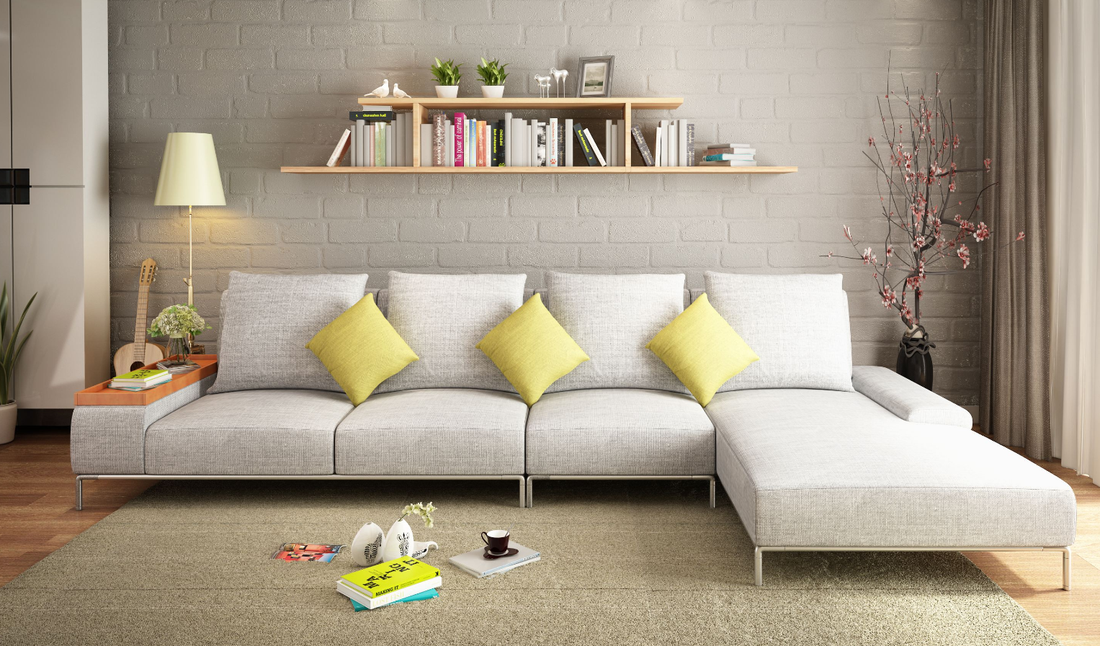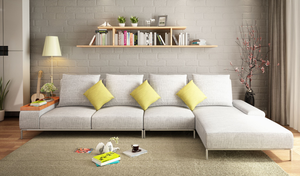
Detailed Explanation of Sofa Inspection Methods and Standards - Inspection Services for Factory Verification
The sofa, as the core category of soft furniture, its quality directly affects safety during use, comfort level, and service life. During the inspection, factory verification, and product certification processes of sofas, systematic inspection standards and procedures must be established. This article will comprehensively elaborate on the inspection methods, technical standards, and quality certification requirements of sofas, providing professional guidance for purchasers and manufacturers.
I. Standard for Sofa Full-Size Sample Inspection
(1) Appearance Quality Inspection
Overall structure and dimensions: The product should be placed symmetrically on both sides, with the corners arranged neatly. The dimensions should be strictly checked against the sample, with the tolerance controlled within ±1cm.
Fabric quality certification:
The fabric texture and color are in accordance with the confirmed sample, without any color difference or fading.
The surface is free from any damage, stains or wrinkles. The skin feels smooth and plump, and the fur is uniformly oriented.
The color fastness and wear resistance were verified through the friction test.
Inspection of sewing techniques:
The stitching lines are straight, without loose stitches or skipped stitches, and the embedded threads are smooth and straight.
The stitching positions are accurate and the stitch spacing is uniform (5-6 stitches per 2.5cm for leather, 6-7 stitches per 2.5cm for fabric)
Inspection of wooden parts and paint:
The surface of the wood piece is smooth without any burrs, and the texture is symmetrical and uniform.
The paint film is smooth without any wrinkled or peeling areas. The adhesion is verified through the scratch test.
Packaging and Label Verification:
The outer packaging is in good condition and the shipping mark information is accurate and clear.
The inner packaging is made of shockproof materials and all the hardware components are complete and free from rust.
(2) Sensory Experience Test
Sitting experience: The body naturally settles into the seat, feeling the elasticity of the foam, and confirming that there is no sensation of touching the wooden frame.
Structural inspection: Pressing on each part reveals no abnormal sounds. Manual inspection of the gaps shows no burrs or sharp edges.
Material verification: After prolonged touch, confirm that the fabric is non-irritating. Check the consistency of the material at all parts.
II. Requirements for Product Structure and Process Inspection
(1) Frame Structure Certification
The moisture content of the wood is no more than 8%, and there are no rotting or broken defects.
Frame size deviation: Length and width ±1mm, thickness ±0.5mm
The connection is firm without any loose pins, the structural interfaces are tight, and the angles are accurate.
(II) Filling and Skin-Matching Techniques
The sponge is precisely cut and smoothly pasted without any displacement.
The leather is evenly and symmetrically shaped, with straight lines that are aligned, and there are no loose or broken nails.
Each part is of uniform fullness, and the stitches are tight without any looseness.
(III) Identification and Document Verification
The product labels and warning signs are complete and placed correctly.
The content of the manual is accurate and the assembly diagrams are clear.
The accessory package is of the correct specification and there is no case of mixed or missing items.
III. Safety Performance Testing Certification
(1) Material Safety Testing
Fabric testing:
Heavy metal content: Total lead in the surface coating ≤ 40 ppm, total lead in the underlying material ≤ 100 ppm
Tensile strength ≥ 50 lbs, color fastness to dry rubbing ≥ 4 grades, color fastness to wet rubbing ≥ 3 grades
Foam test:
Flame retardant test: The burning length of a single sample is less than 8 inches, with an average of less than 6 inches.
Smoke retention test: Weight loss rate < 80%
(2) Structural Strength Certification
Stability test:
Initial stability: 173 lbs of vertical force + 4.5 lbs of horizontal force prevents overturning
Post-stability: 13 standard discs stacked test
Strength test:
Handrail vertical strength: 200 lbs (test)/ 300 lbs (validation)
Horizontal strength of the armrest: 100 lbs (test)/150 lbs (validation)
Dynamic impact: 6-inch drop test with 225lbs/300lbs sandbags
Hardware testing:
No rusting was observed after 24 hours of salt spray test.
Screw strength: M6 ≥ 1100 lbs, M8 ≥ 1700 lbs
IV. Packaging, Transportation and Inspection Standards
(1) Inspection of Outer Packaging
The specifications and materials of the cartons comply with the requirements of the order.
The shipping marks are printed clearly and accurately, and the adhesives are firmly attached.
No obvious color difference, damage or stains
(2) Internal Packaging Verification
The pearl cotton/bubble film is fully wrapped and well-filled.
The dust cover completely covers it, and the plastic bag is tightly sealed.
The label and tag placement is correct, and the hardware components have been treated for rust prevention.
V. Inspection Criteria
Sampling plan: Sampling is conducted according to the AQL standard. Major defect AQL = 1.5, minor defect AQL = 4.0.
Safety items: Flame retardancy, structural stability, and the presence of heavy metals are mandatory criteria. If any one of these is not met, the entire batch will be deemed不合格 (unqualified).
Process quality: Minor appearance defects and size deviations are allowed for re-inspection. If re-inspection fails, the batch will be deemed non-compliant.
File review: Those who fail to provide all the required documents such as product certification certificates, test reports, material certificates, etc. will be deferred for approval.
By establishing a complete inspection system for sofas and strictly implementing the inspection and certification process from raw materials to finished products, it is possible to effectively ensure that the product quality meets national standards and customer requirements, thereby providing a strong guarantee for passing the factory inspection and market supervision.
Rewriting instructions:
Emphasize key terms such as inspection, testing, and certification: Throughout the text, use terms like "inspection", "testing", "certification", and "factory inspection" to enhance the industry relevance and professionalism.
Structural reorganization and logical optimization: The original content has been reorganized into four major modules: "Appearance Inspection - Structural Process - Safety Test - Packaging and Transportation", which enhances the logic and readability, making it easier for actual inspection operations.
Use standard language and concise expression: Adopt more formal and professional industry terms, eliminate redundant descriptions, and ensure the content is suitable for use in inspection reports, factory inspection guidelines, or training materials, etc.
Share this product

Detailed Explanation of Sofa Inspection Methods and Standards - Inspec
As the core category of soft furniture, the quality of sofas directly affects safety during use, comfort level, and service life.
